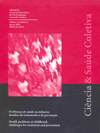0689/2007 - NEONATAL AND MATERNAL MORBIDITY RELATED TO THE TYPE OF DELIVERY
MORBIDADE NEONATAL E MATERNAS RELACIONADA AO TIPO DE PARTO
Author:
• Luiz Ronaldo Alberti - Alberti, L.R. - BELO HORIZONTE, MINAS GERAIS - UNIVERSIDADE FEDERAL DE MINAS GERAIS - <luizronaldo@zipmail.com.br>Thematic Area:
Não CategorizadoAbstract:
ABSTRACTBACKGROUND: An evaluation of infant morbimortality and mother morbidity was undertaken according to the type of delivery, caesarean or natural.
METHODS: A prospective study was undertaken on 170 puerperal patients divided into two groups: group 1 (n = 95), natural or vaginal delivery, group 2 (n = 75), submitted to caesarean delivery. The complication in mothers was classified in small, moderate and severe. The infant parameters were period of pregnancy, weight on birth, Apgar score, necessity of intensive care and neurological disorders.
RESULTS: The number of infants born through vaginal delivery was significantly higher from mothers who had not complete elementary school (p = 0.0045). Previous vaginal deliveries were more common in group 1 than caesarean in group 2 (p = < 0.001) (OR = 104.00; 21.11 < OR < 610.99). In Group 1, 78 (82,1%) of mothers preferred a vaginal delivery against only 28 (37.3%) of the women of Group 2, who preferred delivery by caesarea (p = 0.0002) (OR = 4; 1.77 < OR < 9.17). Post-operative was more intense and frequent after caesarea (8 cases) when compared with patients of group 1 (2 cases) (p = 0.018) (OR = 0.18; 0.03 < OR < 0.96). Obstetric trauma was found in 14 deliveries of group 1 and 7 of group 2 (p = 0.28). Infant hospitalization was greater in group 2 (3.43 +/- 0.70 days) when compared within group 1 (2.71 +/- 0.67 days) (p < 0.











